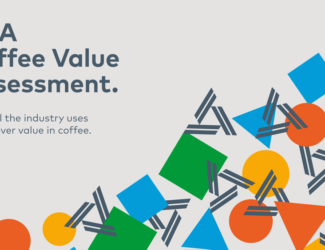
Does the shape of the cup affect the flavor of the coffee?
While we often delve into various factors affecting the taste of coffee, such as grind size or temperature, the role of the drinking vessel itself remains largely unexplored.
Recent research suggests that cup shape significantly influences our coffee-drinking experience, impacting our perception of sweetness, acidity, and overall enjoyment. Dr. Fabiana Carvalho’s 2018 study indicated that the shape of the cup could affect how we perceive the flavors of coffee, building upon earlier research highlighting the importance of cup weight, texture, and shape.
In an industry dedicated to maintaining quality and consistency, understanding how different cup shapes affect flavor perception becomes imperative. Prominent figures in the coffee world, like Nordic roaster Tim Wendelboe and the 2023 World Barista Championship winner, have begun to explore and apply these findings in their practices.
Coffee comprises a complex array of aromatic compounds, contributing to its diverse flavors and aromas. These flavors are detected through both nasal and oral pathways, creating a multisensory experience. While traditional taste categories like bitter, sweet, sour, and salty have been recognized, the perception of complex coffee flavors extends beyond these.
Research has shown that the shape of drinking vessels can impact flavor perception, similar to the effects seen in wine and beer. Dr. Carvalho’s study emphasizes the role of cup shape as an “extrinsic cue” in flavor perception, suggesting that it influences our sensory experiences beyond just taste and aroma.
Dr. Carvalho’s study involved participants tasting the same coffee from different-shaped cups, revealing significant variations in aroma, sweetness, acidity, and overall enjoyment. These findings underscore the importance of designing cups that optimize the consumer experience and match individual taste preferences.
In the real world, coffee professionals like Daniele Ricci and Tim Wendelboe have embraced these findings. Ricci incorporated specially designed cups into his competition routine, aiming to enhance judges’ perception of coffee flavors. Wendelboe collaborated with a designer to create cups tailored to highlight the unique characteristics of different coffees, offering customers a more nuanced drinking experience.
While not all coffee establishments may adopt this approach due to logistical challenges, some, like Wendelboe’s, have successfully integrated it into their service. Matching cups with coffees based on their flavor profiles allows baristas to enhance customers’ experiences and highlight the diverse range of flavors in specialty coffee.
As coffee enthusiasts continue to explore the impact of cup shapes on flavor perception, there’s an opportunity for innovation and experimentation. While scientific research provides valuable insights, coffee service remains an art form, inviting baristas and café owners to explore new possibilities and elevate the customer experience.
The influence of cup shapes on coffee flavor perception is a fascinating area of study that offers insights into our sensory experiences. While the practice of using different-shaped cups may currently be more prevalent in competitions and high-end establishments, there’s potential for wider adoption as the coffee industry continues to evolve. By embracing research-backed findings and fostering creativity, coffee professionals can enhance the enjoyment and appreciation of specialty coffee for enthusiasts worldwide.



